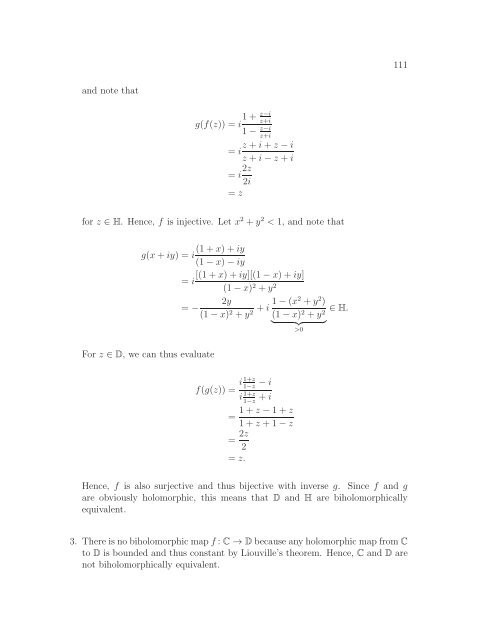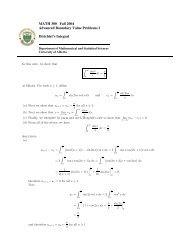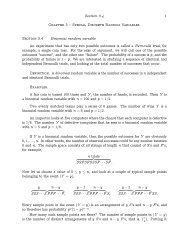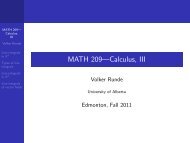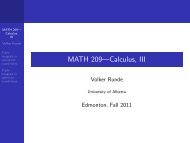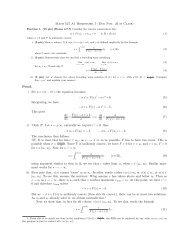Math 411: Honours Complex Variables - University of Alberta
Math 411: Honours Complex Variables - University of Alberta
Math 411: Honours Complex Variables - University of Alberta
You also want an ePaper? Increase the reach of your titles
YUMPU automatically turns print PDFs into web optimized ePapers that Google loves.
and note that<br />
z−i 1+ z+i<br />
g(f(z)) = i<br />
1− z−i<br />
z+i<br />
z +i+z −i<br />
= i<br />
z +i−z +i<br />
= i 2z<br />
2i<br />
= z<br />
for z ∈ H. Hence, f is injective. Let x 2 +y 2 < 1, and note that<br />
g(x+iy) = i (1+x)+iy<br />
(1−x)−iy<br />
For z ∈ D, we can thus evaluate<br />
= i [(1+x)+iy][(1−x)+iy]<br />
(1−x) 2 +y2 2y<br />
= −<br />
(1−x) 2 +y2 +i 1−(x2 +y2 )<br />
(1−x) 2 +y2 ∈ H.<br />
� �� �<br />
>0<br />
f(g(z)) = i1+z<br />
1−z −i<br />
i 1+z<br />
1−z +i<br />
= 1+z −1+z<br />
= 2z<br />
2<br />
= z.<br />
1+z +1−z<br />
111<br />
Hence, f is also surjective and thus bijective with inverse g. Since f and g<br />
are obviously holomorphic, this means that D and H are biholomorphically<br />
equivalent.<br />
3. Thereisnobiholomorphicmapf: C → Dbecause anyholomorphicmapfromC<br />
to D is bounded and thus constant by Liouville’s theorem. Hence, C and D are<br />
not biholomorphically equivalent.


